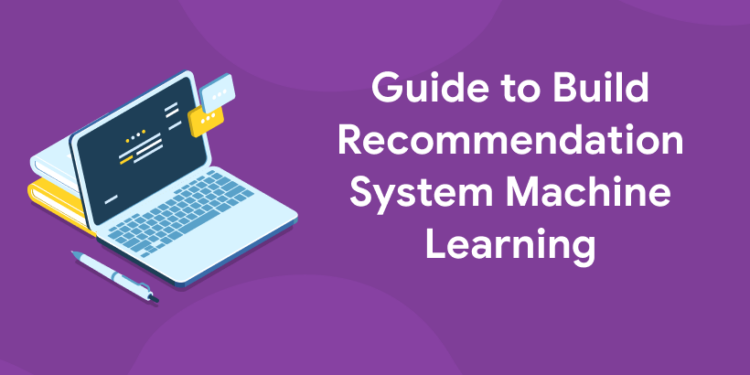Table of Contents
Today’s online businesses typically provide a customized user experience. In machine learning, a recommendation system is a specific kind of personalized web-based application that offers users personalized recommendations about content they might be interested in. The recommender system is an alternative name for the recommendation system. A machine learning recommendation system can forecast a user’s needs for a variety of items and suggest the most important ones. One of the most popular ways that machine learning technology is used in a business is in recommendation systems. Large-scale recommendation systems are present in music streaming, video on demand, and retail. Parts of a novel data revelation model, where users look for people with similar tastes and then ask them to recommend new products, are automated by recommendation systems.
Types of a Recommendation System
1: Which of the following algorithms is most suitable for classification tasks?
- Personalized- recommendation based on your interest.
- Non-personalized- what other customers are looking at right now.
Need For a Recommendation System?
Because of the internet, people have too many purchasing options, which is one of the main reasons why we need a recommendation system in machine learning. The selection of goods was constrained when people used to shop in physical stores. For instance, the number of movies displayed at a video rental store varied according to the store’s size. People can access a wealth of online resources thanks to the internet. A new issue emerged as the amount of information available grew, making it challenging for people to select from a wide range of options. The use of recommendation systems resulted from this. This tool is used by large e-commerce sites to recommend products to customers and personalize a website.
How Does the Recommendation System Work?
We can make recommendations to a client based on what is typically well-liked by other clients. Depending on the client’s product preferences, we can divide them up into different groups and make suggestions for potential purchases. Both of the aforementioned methods have drawbacks. In the first scenario, every client would receive the most commonplace, mainstream items. As a result, everyone will likely hear suggestions that are similar. In contrast, the second one will see an increase in the number of suggestions as the number of clients does. As a result, it will be challenging to divide up the clients into different categories.
Enroll in our certificate program in data science and Machine learning
Data Collection
The most crucial and initial step in developing a recommendation system is this. Two techniques are frequently used to collect the data: explicit and implicit. Explicit information is information that has been voluntarily disclosed, such as client contributions like movie reviews. Data that is gathered from accessible information streams, such as clicks, search histories, request histories, and so forth, but is not provided voluntarily is known as implicit information. The process of gathering and analyzing data on specific variables in an established system allows one to evaluate outcomes and respond to pertinent questions. In all academic disciplines, including the physical and social sciences, the humanities, and business, data collection is a necessary component of research. Although techniques differ depending on the discipline, the importance of ensuring accurate and truthful collection does not change. All data collection efforts should aim to gather high-caliber information that will enable an analysis to result in the formulation of arguments that are believable and convincing in response to the questions that have been posted. When conducting a census, data collection and validation involve four steps, while sampling requires seven steps.
Data Repository
The amount of data reveals the accuracy of the model’s recommendations. Data selection from a large population is significantly influenced by the information type. The capacity may include a common SQL or NoSQL database or some kind of article stockpiling. Another name for a data repository is a data library or data archive. A data set that has been isolated for the purpose of data reporting and analysis is referred to by this general term. In order to collect, manage, and store data sets for data analysis, sharing, and reporting, the data repository consists of a sizable database infrastructure or multiple databases. Researchers can store the data sets they need for their research in a data repository. You must choose an appropriate repository for your data if you’re an author trying to adhere to a journal’s data-sharing policy.
Data Filtration
This data needs to be filtered in order to remove the information needed to create the final recommendations after it has been collected and stored. Different algorithms simplify the filtering process. In the context of IT, the term “data filtering” can refer to a wide range of methods or programs for enhancing data sets. This implies that the data sets have been reduced to only include the information that a user (or group of users) actually needs, leaving out information that might be redundant, irrelevant, or even sensitive.
Algorithms for Recommendation System
Software systems provide users with recommendations based on past iterations and the characteristics of objects/users.
Two approaches can be used to build a recommendation system.
1. Recommendation based on content
uses a user’s or an item’s attributes
Recommend products similar to those the user has previously liked
2. Use collaborative filtering
Items liked by similar users are recommended
Encourage the exploration of a variety of content
Content-Based Recommendation
A classifier is induced by supervised machine learning to distinguish between interesting and uninteresting user items. A recommendation system’s goal is to predict user ratings for items that have not yet been rated. Content filtering’s central premise is that everything has a few highlights x. For instance, the romance movie “Love at last” received a high score for highlight x1, but a low score for highlight x2.
Example;
Every individual has a parameter θ which tells how much they love romance films, and how much they love action films.
If θ = [1, 0.1], the individual loves romance films however not action films.
We can locate the optimal θ with linear regression for every individual.
(Notation)
r(i,j): 1 if user j has rated movie i (0 otherwise)
y(i,j): user j rating on movie i (if defined)
θ(j): user vector parameter
x(i): movie i feature vector
predicted rating [user j, movie i]: (θ(j))ᵀx(i)
m(j): # number of movies user j rates
nᵤ: # of users
n: # of features of a movie
Collaborative Filtering
The drawback of content filtering is that it requires additional data for each and every task. For instance, film side data include categories like romance and action. Finding someone to watch movies and adding supplemental information about each movie is expensive. Users who share interests tend to have a similar preferences. There are a sufficient number of user preferences available. With the help of a technique called collaborative filtering, users can exclude items based on the opinions of other users who share their interests. It operates by looking through a big group of people and identifying a smaller group of users who have tastes comparable to a specific user.
Enroll in our certificate program in data science and Machine learning
Problems & Maintenance with Recommendation System in Machine Learning
The problems are, the inconclusive user input structure, looking for users to participate in criticism studies, weak calculations, Poor results, Poor information, Lack of information, Privacy control and maintenance Cost, Information getting obsolete and Information quality. Machine learning recommendation systems have their origins in a variety of research fields, including information retrieval, text classification, and the application of various techniques from different sections, including machine learning, data mining, and knowledge-based systems.
Future of Recommendation System
Through a close examination of the items brought back, Extract was able to understand negative evaluations.
How to include the neighborhood in proposals. Later on, recommendation systems will be used to forecast product interest, enabling earlier communication with the store network. Theoretical underpinnings like network effect, two-sided markets, and game theory can help recommender systems. Actually, creating recommender systems as two-sided online platforms will offer a wealth of data.
Benefits from recommender systems
Engagement of the user is probably the most significant benefit of implementing recommendation systems out of all the others. E-commerce relies heavily on enticing visitors to stay on the website and take a closer look at more of the products available. The more time users spend on the site, the more trust they have in the company. More new and repeat customers, more monthly visits, and more conversions are the direct results of this. A well-crafted recommendation system can aid in the growth of your company, and you can select the precise strategies for success using a variety of customization options.
An e-commerce website or platform can use a recommendation engine for a variety of purposes. It can produce personalized emails, recommend products, and enhance the presentation of goods that merit a little more focus. The right engine can help boost engagement opportunities with your products and offer a greater influx of cross-selling opportunities, in addition to helping you strengthen relationships with your customers, which can increase returns for your company. Online retailers are looking for more and more ways to offer customers a dynamic shopping experience that’s tailored to their fluctuating needs and intent as e-commerce activity after COVID continues to soar.











